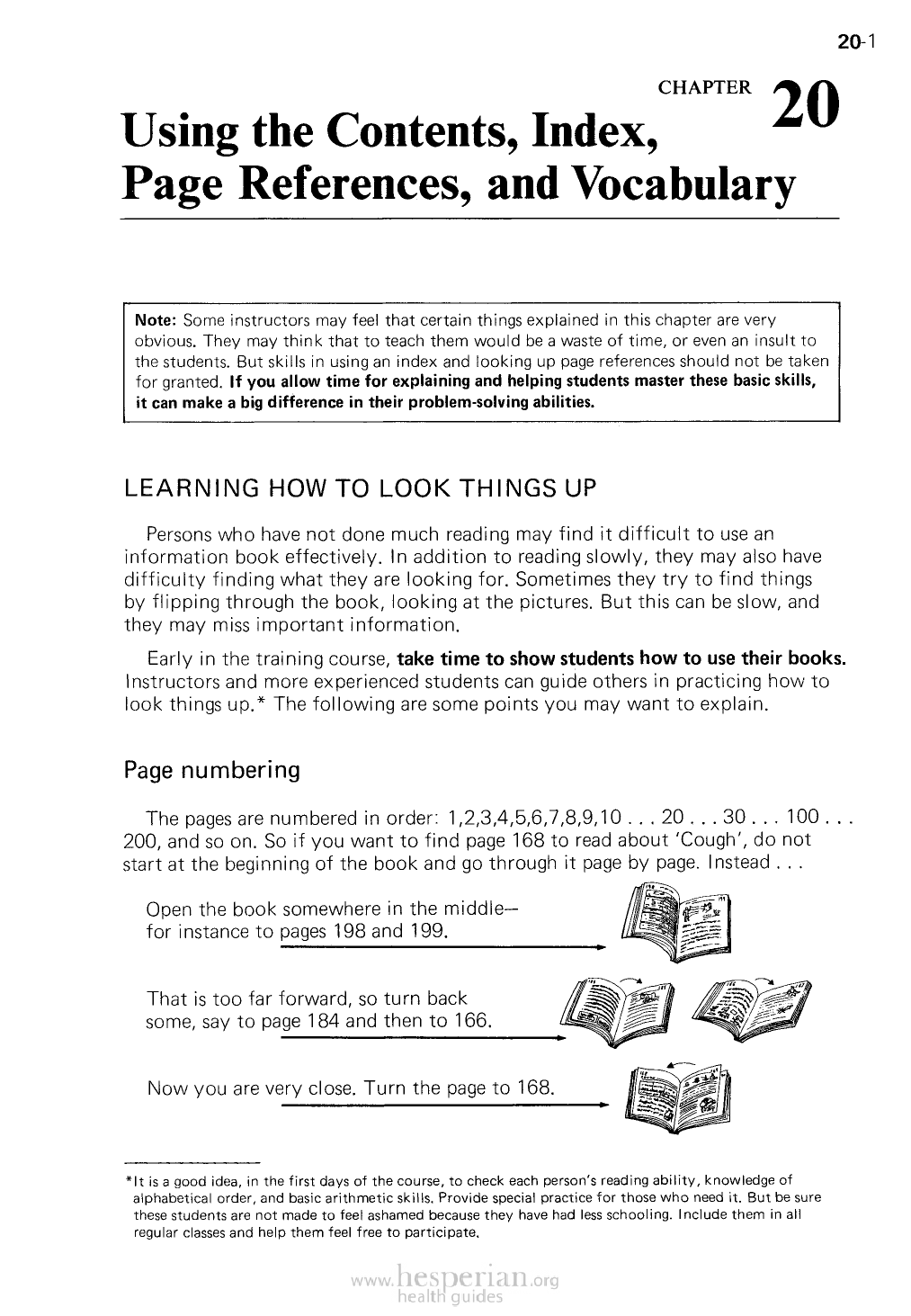
Using the Contents, Index,
CHAPTER
20Page References, and Vocabulary
20-1
Note: Some instructors may feel that certain things explained in this chapter are very
obvious. They may think that to teach them would be a waste of time, or even an insult to
the students. But skills in using an index and looking up page references should not be taken
for granted. If you allow time for explaining and helping students master these basic
skills, it can make a big difference in their problem-solving abilities.
LEARNING HOW TO LOOK THINGS UP
Persons who have not done much reading may find it difficult to use an
information book effectively. In addition to reading slowly, they may also have
difficulty finding what they are looking for. Sometimes they try to find things
by flipping through the book, looking at the pictures. But this can be slow, and
they may miss important information.
Early in the training course, take time to show students how to use their books.
Instructors and more experienced students can guide others in practicing how to look
things up.* The following are some points you may want to explain.
Page numbering
The pages are numbered in order: 1,2,3,4,5,6,7,8,9,10............. 20........ 30........100 . .
. 200, and so on. So if you want to find page 168 to read about ‘Cough’, do not start at
the beginning of the book and go through it page by page. Instead . . .
Open the book somewhere in the middle—
for instance to pages 198 and 199.
That is too far forward, so turn back
some, say to page 184 and then to 166.
Now you are very close. Turn the page to 168.
*It is a good idea, in the first days of the course, to check each person’s reading ability, knowledge of
alphabetical order, and basic arithmetic skills. Provide special practice for those who need it. But be sure
these students are not made to feel ashamed because they have had less schooling. Include them in all
regular classes and help them feel free to participate.